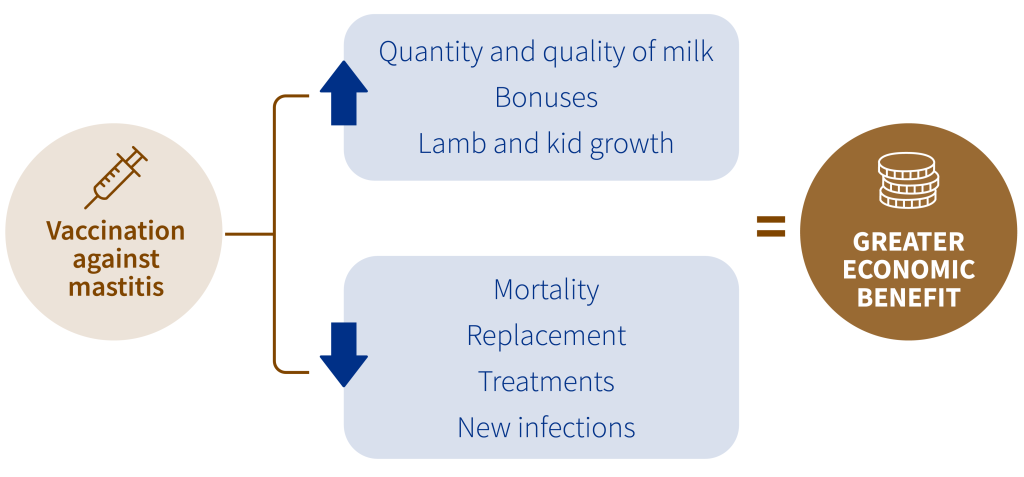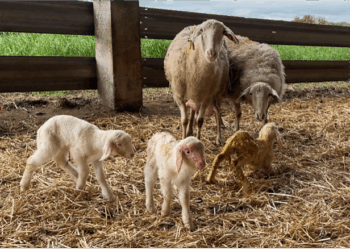Sheep and goat mastitis is a serious problem on farms, due to the losses it entails. Vaccination is a very effective measure to avoid its impact, but doubts may arise when deciding whether it is a good investment. Below, we will see how vaccination against mastitis will help us improve the profitability of the farm.
Impact of mastitis

Cases of clinical mastitis are of great concern due to their high mortality (up to 90%) and loss of production, in addition to treatment costs.
Subclinical mastitis seriously affects the quantity and quality of milk, and can cause a 50% loss of milk production.
Vaccination against mastitis must be included in the farm’s health plan
Vaccination against Staphylococci is the key tool to control the disease.
In the case of VIMCO®, Hipra’s vaccine against sheep and goat mastitis, field experience and numerous studies show that it can reduce both clinical and subclinical mastitis, as well as pathogen excretion.
Economic benefits of vaccination:

– Reduction of mortality and replacement: vaccination helps reduce the number of clinical cases and their severity
– Reduction of new cases: by reducing excretion we protect the entire flock.
– Reduction of treatments: we will reduce the need to use antibiotics or anti-inflammatories. This will avoid the risk of presence of inhibitors in milk.
In a field study in Greece, profit per animal increased by €21 after vaccinating with VIMCO®
– Improvement in milk quality: due to the reduction of somatic cell count (SCC) and better % of fat and protein. Better milk quality can lead to price bonuses, and also optimise the production of dairy products.
– Increased milk production: the reduced SCC is related to increased production.
– Better growth of lambs and kids: In the case of natural lactation, lambs and kids with mothers without mastitis have better growth and higher final weight.
In a study in Spain, the ROI of VIMCO© was 6 in Lacaune sheep and 9 in Manchega sheep. In other words, each euro invested in the vaccine produced a return of €6 and €9, respectively.
Conclusions
To calculate the ROI of mastitis vaccination, we must take into account the short- and long-term benefits in terms of improvements in production, health and well-being.
Vaccinating the herd against mastitis will be a measure that improves the farm’s profitability
Article written by:
Tania Perálvarez Puerta. Global Product Manager, Small Ruminants Franchise – HIPRA




